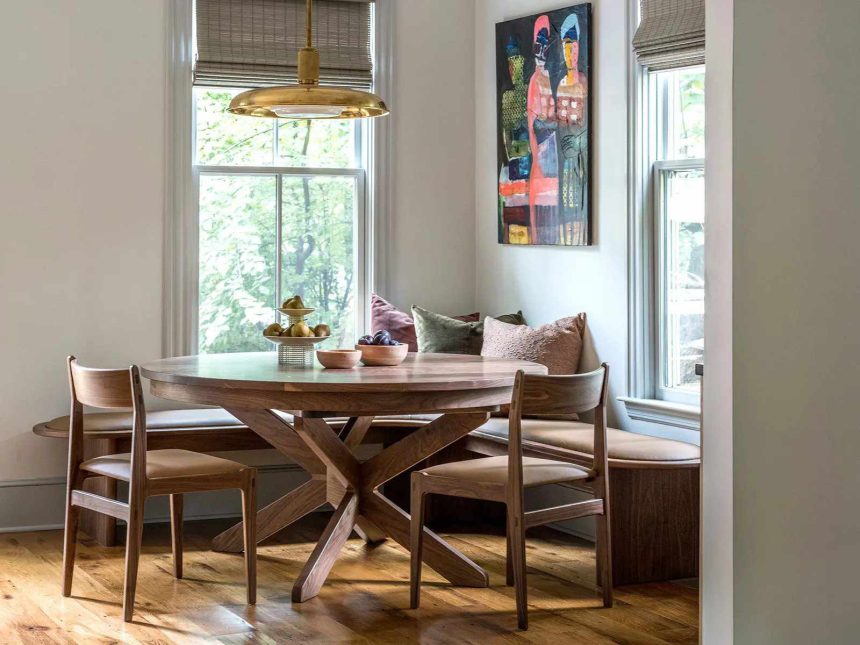With so many types of art pieces to choose from for your home, it may be daunting to think about starting to shop for prints, posters, originals, or other works. However, filling your home with artshould be an enjoyable process, and it isn’t quite as complicated as you might think, either.
We asked professional art experts to share insights on the key steps to take before buying art of any kind—and at any price point—and below, we’re detailing five main considerations on which to focus.
Meet the Expert
- Cathy Glazer is the founder of Artfully Walls.
- Liz Lidgett is the founder of Liz Lidgett Gallery and Design.
- Liza Pruitt is the founder of an eponymous online-only art gallery.
Think About How You Want a Room to Feel
“There really are no rules when buying art,” says Cathy Glazer, founder of Artfully Walls. “Art is generally considered to be subjective so by definition there is no right or wrong way to choose it.”
Glazer recommends selecting art based on your personal preferences and if they make you feel good when looking at them.
That said, those who are unsure what type of art is best for their space should first think about the tone they would like to set within the room. Whether that is sophisticated, cozy, dramatic, soothing, or something else entirely, Glazer advises. Or perhaps you wish to pay homage to a favorite locale.
As Glazer says, “perhaps you’d like to channel the Italian sea in your New York apartment, art can help you achieve any vibe you’d like to create in your home.”
Want more design inspiration? Sign up for our free daily newsletter for the latest decor ideas, designer tips, and more!
Consider a Room’s Color Palette
A room’s color palette will shape what kind of artwork will look best in the space.
“You can either mimic the hues present in your room’s decor and furnishings or if you prefer to make a statement, check out a color wheel to find complementary hues like orange and blue or red and green,” Glazer suggests.
Pay Attention to Scale and Positioning
Glazer notes that it’s important to be mindful of scale when selecting works of art.
“You don’t want to purchase a large piece for a small wall that will make it seem crunched, and you don’t want to have a large wall with small art that feels unanchored and lost,” she notes.
Positioning your art, specifically taking into account sight lines, is also key.
“Mastering sight lines is a major part of designing a home, and it certainly applies to art,” Glazer shares.
Consider Your Budget
Artwork ranges greatly in price, and more costly pieces sometimes come with hidden fees, says Liz Lidgett, the founder of Liz Lidgett Gallery and Design.
“Make sure to take into account sales tax, shipping if you are buying out of state, or auction house fees that are in addition to the hammer price,” she explains.
And many pieces, regardless of price, will require custom framing. To find out a quote, give a call to a frame shop and give them the correct size, so they can give you a rough estimate, Lidgett suggests.
Don’t be afraid to start small when it comes to buying original works.
“A great way to collect from some of your favorite artists is to collect their small studies that can start at $30,” says Liza Pruitt, the founder of an eponymous online-only art gallery. “This way, you are collecting an original piece.”
Posters and prints are also more affordable, too. When buying prints and editions, either aim to buy a high edition number and lower value print by very well-known artists or a low edition number and affordable print by emerging artists, Pruitt recommends.
Be Prepared to Hang Your Art Right Away
Don’t simply order a beautiful piece of art and then allow it to sit in the corner of your living room for months on end once it arrives. Rather, it’s smart to frame and hang your art on the wall right away.
“This helps protect the piece from any falls or potential damage,” Lidgett explains. She advises using an art hanging hook rather than just a nail due to its sturdiness.








